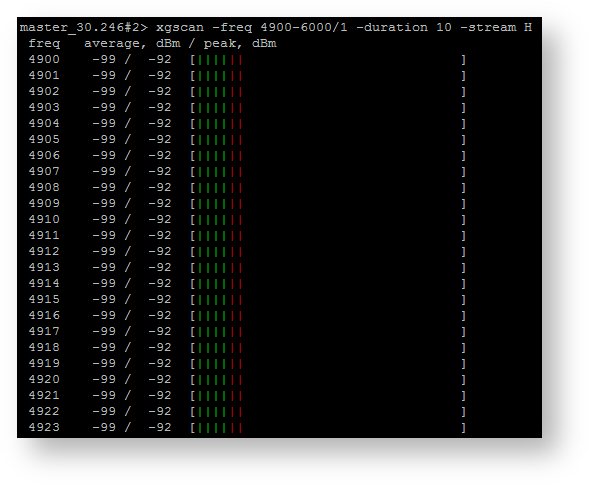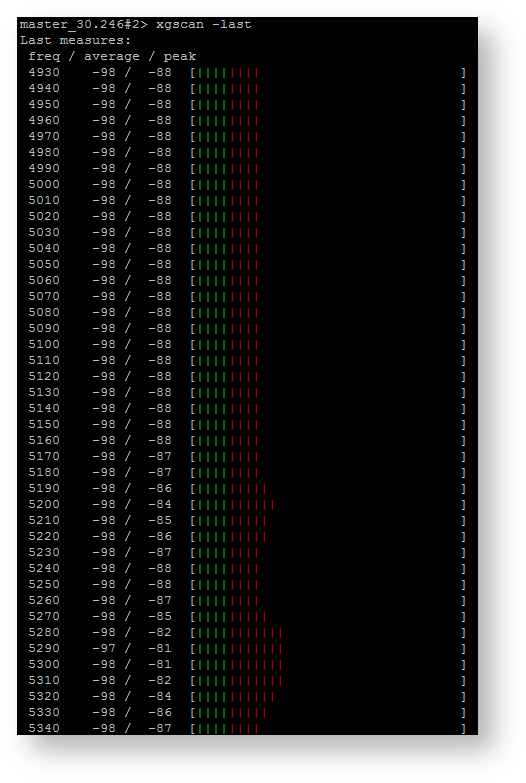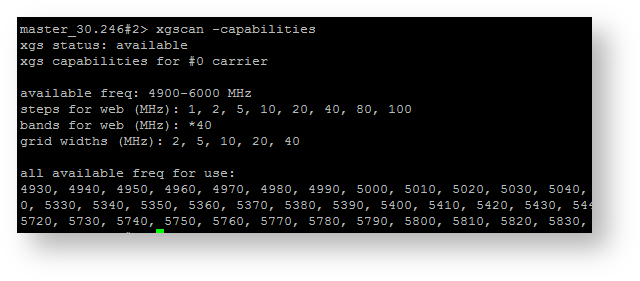Use this command to start the Spectrum Analyzer.
Syntax:
#1> xgscan [arguments]
#xgscan usage:
xgscan -freq {<freq_start>[-<freq_end>[/<step>]],...}
xgscan -duration {10...10000}
xgscan -last
xgscan -stream {V, H}
xgscan -capabilities
Arguments description is given in the table below
| Command | Description |
|---|---|
xgscan -freq {<freq_start>[-<freq_end>[/<step>]],...} |
|
xgscan -duration {10...10000} |
|
xgscan -last |
|
xgscan -stream {V, H} |
|
xgscan -capabilities |
|
Table - "xgscan" arguments description
Figure - "xgscan" output example
Figure - "xgscan -last" output example
Figure - "xgscan -capabilities" output example


